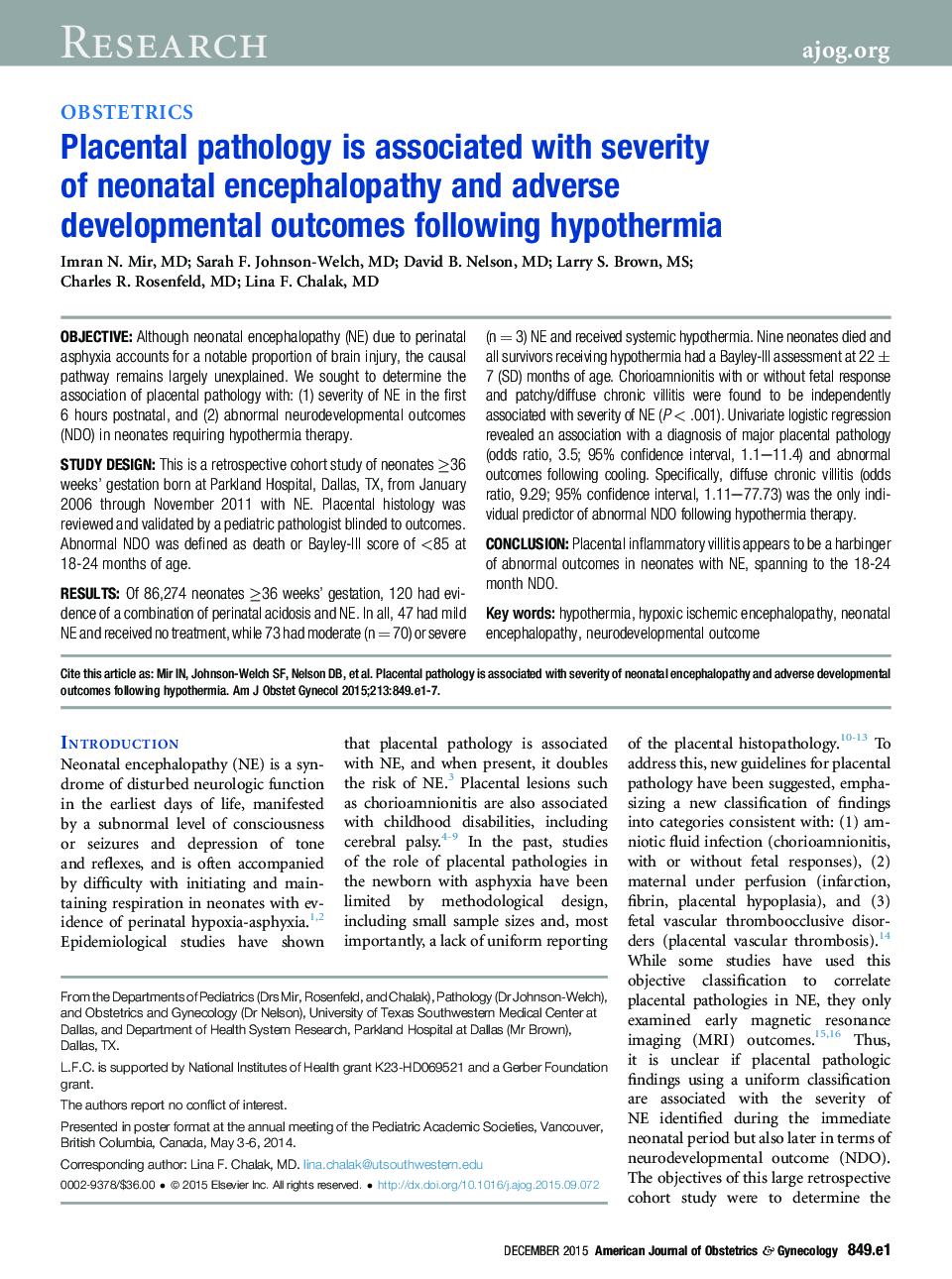| Article ID | Journal | Published Year | Pages | File Type |
|---|---|---|---|---|
| 6143857 | American Journal of Obstetrics and Gynecology | 2015 | 7 Pages |
ObjectiveAlthough neonatal encephalopathy (NE) due to perinatal asphyxia accounts for a notable proportion of brain injury, the causal pathway remains largely unexplained. We sought to determine the association of placental pathology with: (1) severity of NE in the first 6 hours postnatal, and (2) abnormal neurodevelopmental outcomes (NDO) in neonates requiring hypothermia therapy.Study DesignThis is a retrospective cohort study of neonates â¥36 weeks' gestation born at Parkland Hospital, Dallas, TX, from January 2006 through November 2011 with NE. Placental histology was reviewed and validated by a pediatric pathologist blinded to outcomes. Abnormal NDO was defined as death or Bayley-III score of <85 at 18-24 months of age.ResultsOf 86,274 neonates â¥36 weeks' gestation, 120 had evidence of a combination of perinatal acidosis and NE. In all, 47 had mild NE and received no treatment, while 73 had moderate (n = 70) or severe (n = 3) NE and received systemic hypothermia. Nine neonates died and all survivors receiving hypothermia had a Bayley-III assessment at 22 ± 7 (SD) months of age. Chorioamnionitis with or without fetal response and patchy/diffuse chronic villitis were found to be independently associated with severity of NE (P < .001). Univariate logistic regression revealed an association with a diagnosis of major placental pathology (odds ratio, 3.5; 95% confidence interval, 1.1-11.4) and abnormal outcomes following cooling. Specifically, diffuse chronic villitis (odds ratio, 9.29; 95% confidence interval, 1.11-77.73) was the only individual predictor of abnormal NDO following hypothermia therapy.ConclusionPlacental inflammatory villitis appears to be a harbinger of abnormal outcomes in neonates with NE, spanning to the 18-24 month NDO.
